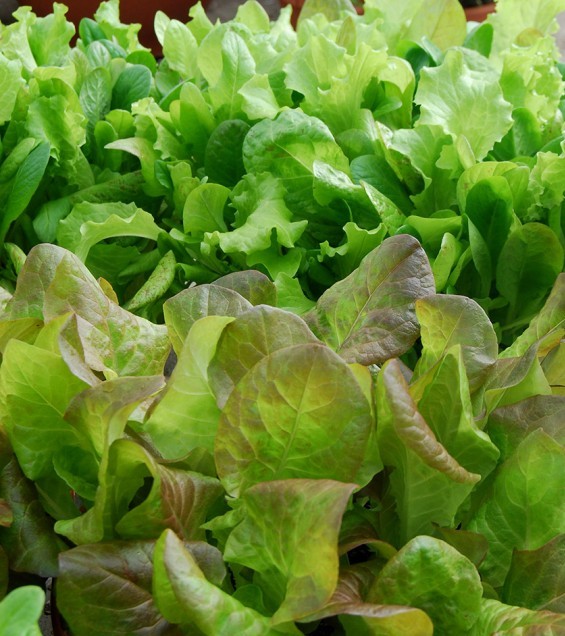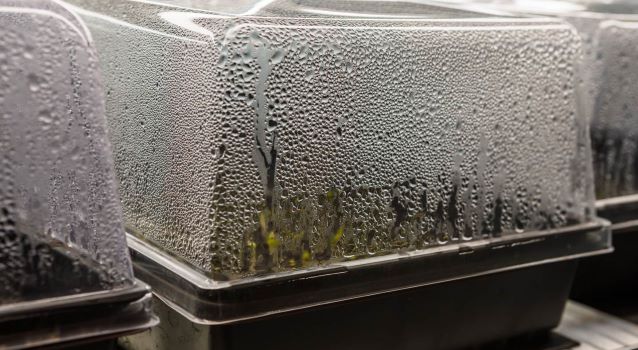
Seed Starting
Smell the soil and see the plants grow new leaves! You can experience new life by starting seeds, also known as sowing, indoors this winter! Each plant packet will tell you when to sow the seeds but most will be started late winter through early spring.
Reasons to start your own plants from seed:
- Save money over the long run – The initial investment into growing gear may be seem like a lot but you can use trays, pots, lights, etc for multiple years.
- If you have a plant that dies, it’s ok! Sow extra seeds so you can avoid total loss. That one plant loss will be a low-cost loss than an already grown starter plant. If all else fails, we have starter plants to make sure you grow what you want to!
- Seeds will last longer than the packet expiration date. There may be lower germination rate so plant one or two extra seeds per hole.
- You can grow a lot of plants and a diverse variety! Garden centers, like us, grow a lot of different varieties but we can’t grow them all.
Next, we will cover seed packet info to take note of, supplies you will need to start seeds indoors, caring for seedlings, and hardening off seedlings.
Bonus info about sowing seeds outdoors in the winter is included! It is a must-see if you want to sow perennial plants.
Important seed packet info to get to know the plants you are growing:
- The best time to plant ( Weeks before or after frost) The last frost date for Southern MN is projected as May 1- May 15th. See examples in the next section of sowing times before transplanting outdoors.
- Indoor or direct sowing recommendations
- How deep to plant the seeds
- Days to germination gives an idea of how long it takes the seed to sprout
- Days to maturity = the number of days from planting to harvest
- Seedling thinning & spacing directions
- Check if it’s perennial (must be zone 4 to be S.MN hardy) or annual (only grows one season)
Start seeds indoors or directly sow them in the garden or planter?
Use the “date to maturity” as a guide for your produce. This will let you know about the time you should be harvesting and if you will need to sow in the winter. Some plants have a LONG growing season and should be started indoors around Feb/Mar to reach maturity. ( ex. peppers, celery, tomatoes, cole crops, lemongrass, and rosemary)
Some plants have sensitive roots and mature fast enough in our climate to be directly sown. Examples are corn, cucumbers, potatoes, carrots, sunflowers, nasturtium, beans, radishes, peas, dill, and radishes.
**Hardy perennials may require cold stratification or scarification for proper germination. Read more about starting seeds outdoors in the winter, which is needed for zone 4 and 5 perennial seeds.
What type of growing medium is best?
AVOID using soil from your yard/garden if possible! It is an easy way to introduce unwanted pests and disease problems for little seedlings. *Most at-home compost piles do not get hot enough to kill harmful pathogens.
Recommended for seeds – Seed Starting Mix. It is a fine textured, soilless medium that is sometimes heat sterilized. It contains no nutrients and is intended for germination only.
When potting up seedlings into containers – Standard Potting Mix. Any potting mix will do! Some may contain nutrients to start feeding your plants but if you have them planted in containers you will have to supplement the soil with fertilizers as they get bigger.
Supplies needed to start seeds indoors:
Plug tray, soil pellets or seed starting potting soil, open flat, humidity dome, pots, watering can, heat mat, fertilizer, grow light, and a fan.
Let’s dig into each of these materials and why you need them.
Plug Trays – Provides a controlled environment for proper germination
When choosing a size of plug tray, ask yourself how many plants you want to grow. Some plug trays come with smaller plugs and can fit more plants and vice versa. The smaller the plug, the sooner you will need to pot up into larger plug trays or pots.
Soil Pellets
Usually, these pellets are made of coco coir. To expand the pellets, soak them in water and place the seed in the soil.
Open Flats
With drainage holes: Fill with seeding mix and scatter seeds. Divide and up-pot or plant outside when they are ready.
Without drainage holes: Use under plug trays to catch the water/soil.
Humidity Dome – Keeps moisture in and helps germination of seeds.

Fits over most plug trays and open flats. A short dome is for seed starting, and a tall dome is for propagating cuttings. Domes will need to be taken off after the seedlings are a couple of inches tall.
Pots – Plastic, Coco Coir, Biodegradable options
Use various sizes to start seeds if desired. Pots are good for when you need to divide plants in plug trays and up-pot. Choose the right-sized pot when up-potting! Too big and it may not dry out fast enough, causing root rot.
Watering Can/Spray Bottle – For keeping the soil moist and not disturbing the soil around seedlings.
Heat Mat – Most homes are not warm enough for proper germination
Raises soil temp 10-20 degrees above room temperature which will speed up the germination process and reduce chances of seeds rotting. The heat mat does not need to be on once all the seedlings have sprouted.
Lights & Timer – Supplemental light is essential to growing happy seedlings indoors!
Plants need strong light so supplemental light prevents weak and leggy plants. Get full spectrum/daylight bulbs. There are T8 & T5 fluorescent, Standard Bulbs, and LED options.
Use a timer to make life easier! 14 hrs. of light per day is the standard after seeds germinate.
There is no need to have a light on before seedlings emerge unless the seed packet says “light germinated”.
Fans
A light breeze helps grow strong plant stems. The movement of the stem will strengthen it. It will also help prevent fungal diseases from too much humidity.
Fertilizer
Seedlings do not need nutrients right away. Wait until they have a few sets of true leaves before adding fertilizers.
A half-strength, balanced fertilizer works well for most plants. We recommend looking up proper fertilization for specific plants grown.
Caring for seedlings:
Proper watering is essential. Keep soil evenly moist until germination.
Allow tap water to sit out overnight to dechlorinate when possible. Avoid using soft water.
Know your plant’s specific watering and fertilization needs by reading their packet or researching online.
Find a routine and water early in the day if possible.
After germination, allow the soil to dry slightly between watering. This encourages root growth! Avoid “loving your plants to death”, aka overwatering.
Hardening Off – Allows your plants time to adjust to light, temperature, and environmental changes
Start putting your potted plants in the shade on a calm day, for an hour or two. Slowly increase time by 1 to 2 hours outside and sun exposure over several days. It usually takes 7-14 days to fully acclimate. Reduce sun exposure again if you see signs of sun-scorched foliage. Make sure you check the soil moisture once or twice a day, depending on pot size.
We carry grow lights, seed starting kits, seedling potting soil, fertilizer, and seeds. Later in the spring, we will have vegetables and herbs that we have grown for you to purchase if you don’t get to start your seedlings.
